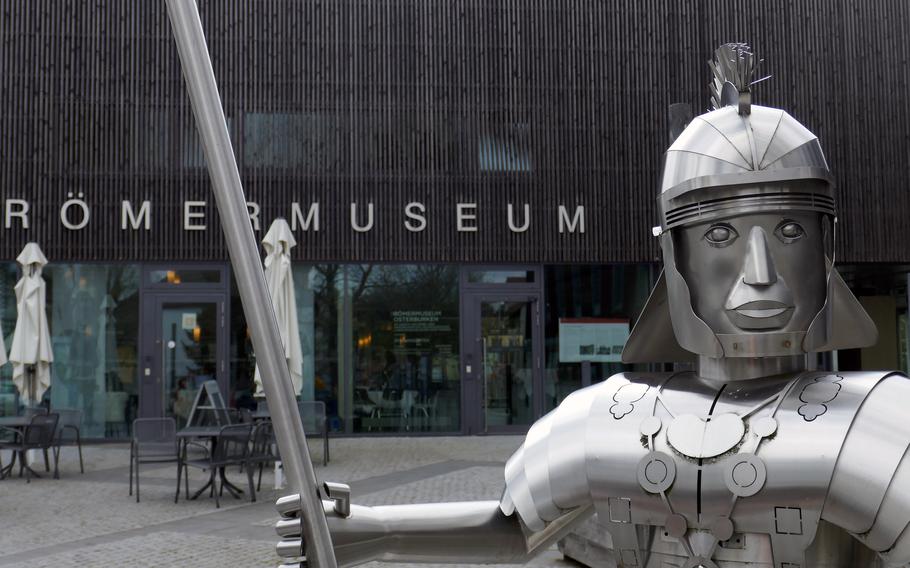
A stylized metal statue of a Roman soldier stands in front of the Roemermuseum in Osterburken, Germany. The museum features the remnants of a Roman bath and artifacts from the time when they had a fort guarding the border here. (Michael Abrams/Stars and Stripes)
It was a long way away from the comforts of Rome, a lonely outpost in a cold, gray land. Standing in the watchtower, the Roman soldiers looked out across the hills, keeping an eye out for signs of Germanic invaders.
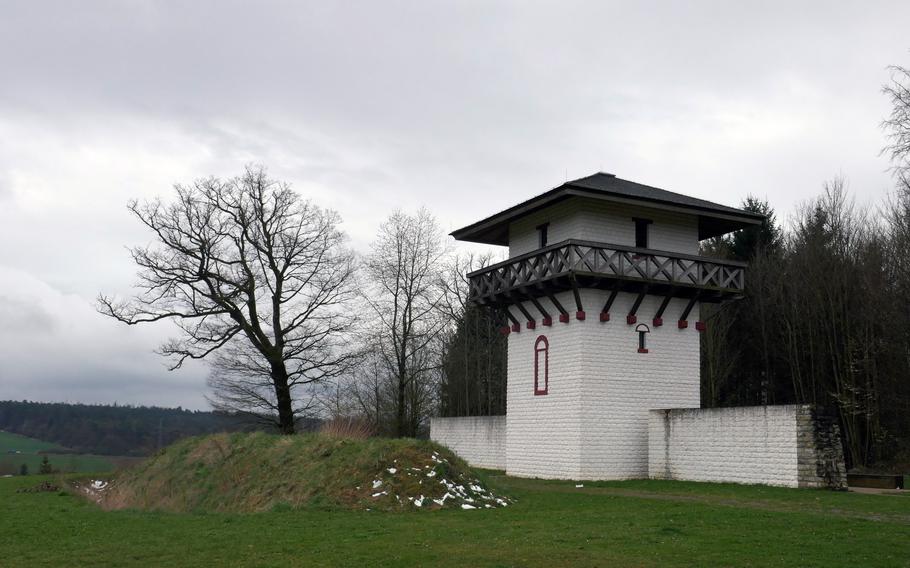
A reconstructed Limes watchtower stands on a hill near Osterburken, Germany. The Limes was the border of the Roman Empire from the early second century to A.D. 260. At first just a string of guard posts, over the decades it was strengthened with a wood palisade, a ditch and an earthen rampart to protect the Romans from Germanic tribes. (Michael Abrams/Stars and Stripes)
They were guarding the Limes, the boundary between the Roman Empire and barbarian country from the early second century to 260.
A defensive line, in Germany it ran from Rheinbrohl on the Dutch border in the northwest down to the Danube River near Regensburg in the south.
At first just a string of guard posts, the Limes (pronounced lee-mus) was strengthened over the decades with a wooden palisade, a ditch and an earthen rampart to protect the empire from Germanic tribes.
It was supported by a chain of forts, where the soldiers lived. Along with the kastell, as the forts were called, there often were administrative offices, a sacred district and, important in Roman life, baths.
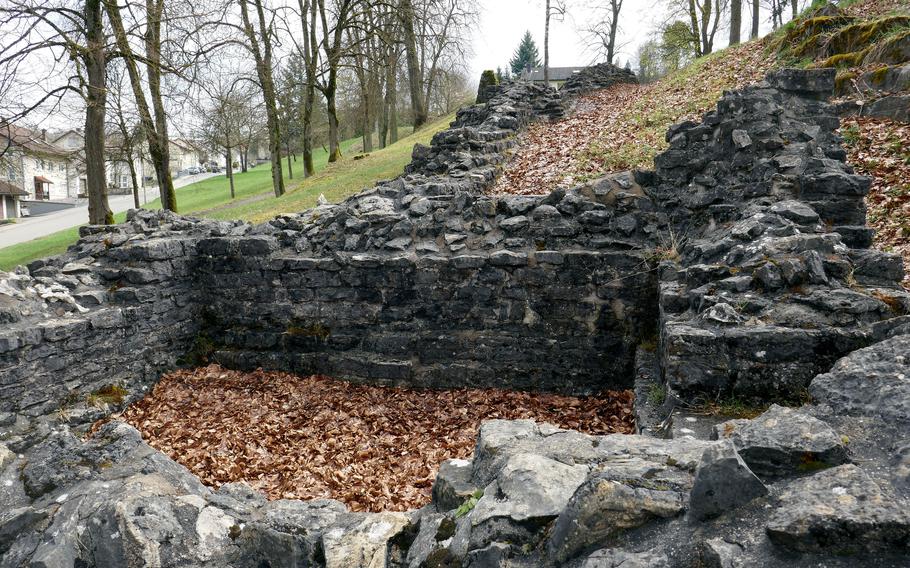
The ruins in Osterburken, Germany, of the Roman kastell, or fort, that once stood here. In the second and third centuries, the Romans guarded the Limes here, the boundary between the empire and the Germanic tribes. (Michael Abrams/Stars and Stripes)
One of the forts along the border was at what is now the town of Osterburken. Tucked away in rolling, wooded hills of the Odenwald are a reconstructed watchtower, the remnants of the fort and the Roemermuseum.
The tower and the section of the Limes are outside town. You can climb up to get a view of the surroundings. Originally, the Limes towers usually had a second-floor entrance, which was reached by a ladder.
There is not much left of the fort, just some low walls and foundations. The main gate’s frame has been reconstructed using metal pipes.
A look through the Archaeoskop, a binocular-like contraption, shows the visitor how experts think the gate looked in the third century.
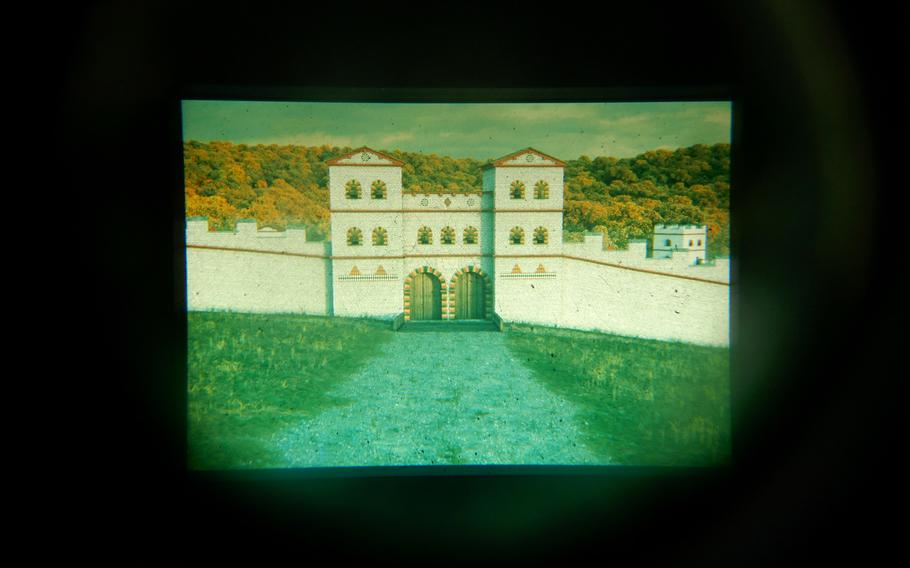
A view through the "Archaeoskop," a binocular-like contraption that shows the visitor how experts think the Roman fort at Osterburken looked in the third century. Today, only the foundations of some of the buildings remain, but an outline of the gate, made with steel pipes, lets one get an idea of how big it once was. (Michael Abrams/Stars and Stripes)
The Roemermuseum gives a glimpse into Roman life in the second and third centuries.
The first thing to see is the Roman bath. Commonly, baths consisted of a tepidarium (warm room), a caldarium (hot room) and a frigidarium (cold room). Beyond their cleansing function, they were a place for socializing and relaxing.
The museum’s ground floor is full of artifacts found in the area. Pottery, jewelry, weapons and coins are among the things displayed. Check out the legion of Roman tin soldiers exhibited.
There is even a small section of artifacts from the people who populated the other side of the Limes.
On the second floor is an exhibit on the religions and deities of the Romans.
At the top of the stairs is probably the most modern display in the museum, a colorful painting of the pantheon of Roman gods. The image covers a complete wall.
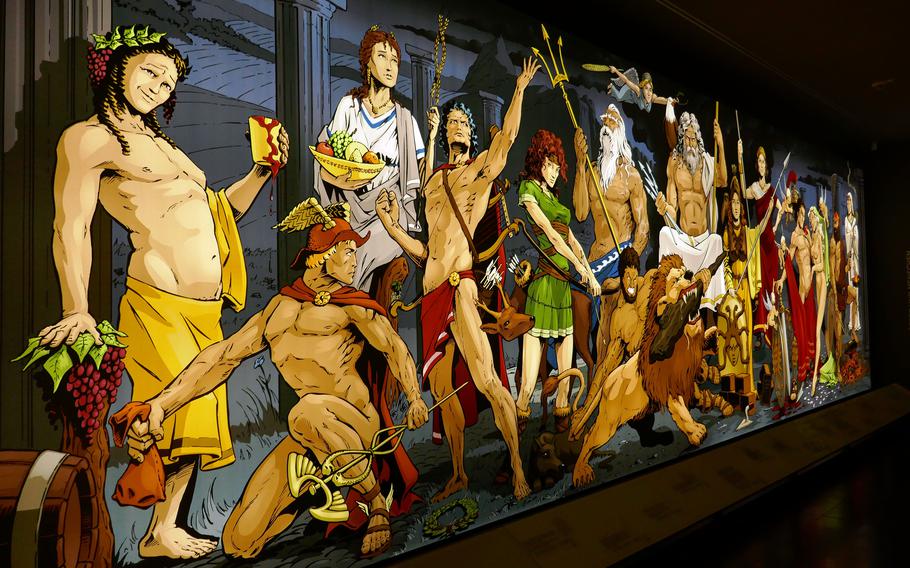
The most modern thing in the Roemermuseum in Osterburken, Germany, is probably this painting of the pantheon of Roman gods, with a couple of minor ones like Bacchus, at left. (Michael Abrams/Stars and Stripes)
If nudity makes you uncomfortable, even in art, beware, because the first thing you’ll see is Venus in all her naked glory.
Otherwise, the exhibit is mostly made up of different consecration altars. A person had an altar made and was then considered to be under the protection of the deities to whom it was consecrated.
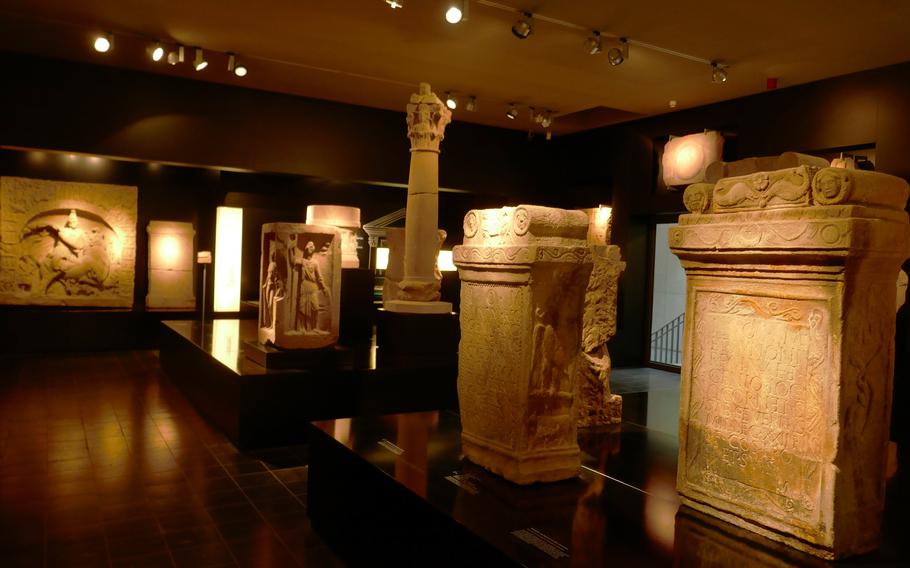
Inside the room dedicated to Romans religions at the Roemermuseum in Osterburken, Germany. The carved stones at right are Roman consecration altars. A person had an altar made and was then considered to be under the protection of the deities to whom the altar was consecrated. (Michael Abrams/Stars and Stripes)
If you haven’t yet had your fill of Roman artifacts, about 20 minutes down the road from Osterburken is Jagsthausen, a small town with a big castle.
There also was once a Roman fort and bath here. The fort is gone, but the foundations of the bath can still be seen, along with other relics, most notably parts of a column dedicated to the Roman god Jupiter.
These are copies. The originals are displayed at various museums, including one in the castle.
In the end, all the consecration altars in the area didn’t seem to help. The Limes was abandoned around 260, and the invading Germanic tribes settled the area.
On the QT:
Directions: Osterburken is about an hour drive from Stuttgart and about 2.5 hours from Kaiserslautern. Leaving from Wiesbaden, you can take a scenic route through the Odenwald via autobahn A3 and highways B469 and B47. Jagsthausen is about a 20-minute drive from Osterburken.
Hours: The Roemermuseum is open from 10 a.m. to 6 p.m. Tuesday through Sunday. The reconstructed tower is open from April through October.
Cost: Admission is 4 euros for adults and 2 euros for children. A family ticket for parents and their children is 10 euros.
Food: There is a cafe inside the museum.
Information: Online: roemermuseum-osterburken.de. Museum exhibits are labeled only in German. The fort and the Limes tower, however, have English descriptions.